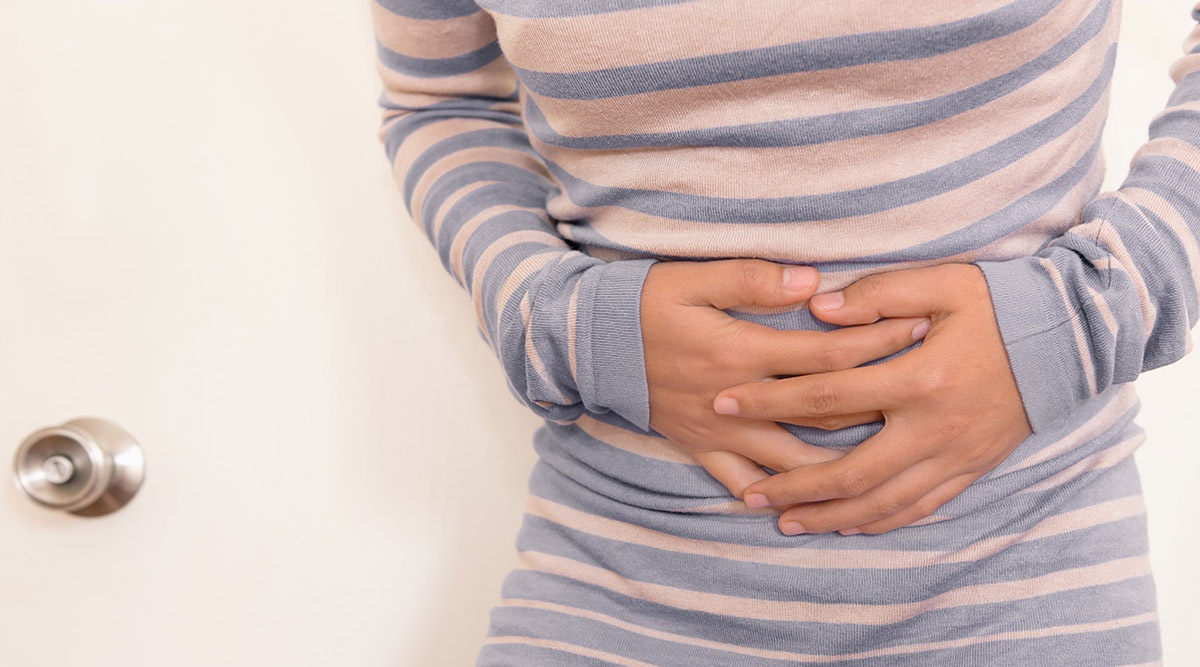Updated: May 28, 2022 1:44:29 pm
 What causes menstrual pain?
What causes menstrual pain?Women are the pillars of a family and if the woman is healthy the family stays healthy. When we talk about health it is not only physical but also mental health which should be focused on. With women multi-tasking all the more important that focus should be on sexual and reproductive health, cancer prevention strategies and menstrual health awareness. This all should be started from an early age of every woman.
Menstrual cramps are painful sensations that affect many people before and during a menstrual period medically called dysmenorrhoea. This can range from being a dull ache to bothersome severe pain affecting quality of life.
Usually menstrual cramps start a year or two after menarche or first menstruation as girls start having ovulatory cycles. So some cramping during cycles can be taken as healthy that is ovulation is happening. So when these cramps occur it is very important to understand that it is only primary dysmenorrhea and no underlying problem causing secondary or congestive dysmenorrhoea is there. A detailed history which includes the pattern of pain can give clue to see if any underlying cause is there. Usually if any underlying causes are present pain starts premenstrual is prolonged and may or may not be associated with heavy bleeding. Intermenstrual pain and dyspareunia (painful sex), painful defaecation may be other symptoms in secondary dysmenorrhoea.
Menstrual cramps usually refer to a dull, throbbing, cramping pain in the lower abdomen, just above the pelvic bone.
Best of Express Premium
Other symptoms may include:
- Pain in the lower back and thighs
- Nausea and vomiting
- Sweating
- Faintness and dizziness
- Diarrhoea or loose stools
- Constipation
- Bloating
- Headaches
Some causes of secondary dysmenorrhoea includes PID, Endometriosis, Adenomyosis & Fibroids.
When it comes to management symptomatic relief with NSAID’S can be achieved.
Lifestyle management including exercise meditation yoga cutting down on processed food avoiding constipation increasing fibre intake in diet helps in reducing symptoms.
If the cramps are intense cyclical hormonal therapy can be given as lifestyle measures are being added.
Other types of hormonal birth control, including some intrauterine devices (IUDs), vaginal rings, patches, and injections can all help decrease cramping.
If the cramps are due to an underlying medical condition, such as endometriosis or fibroids, surgery to remove the unwanted tissue may be needed.
Some home remedies that may provide relief are:
- Applying a heat pad to the lower abdomen
- Practicing relaxation and mindfulness techniques
- Engaging in physical exercise, such as jogging or yoga
- Taking a warm bath or shower
- Having a massage
- Using transcutaneous electrical nerve stimulation (TENS)
Herbal remedies
Various herbal teas and other herbal remedies may help manage symptoms, although research has not yet proven that they can help. Intake of certain Chinese teas like chamoille tea taking fennel seeds are some measures that have been known to help.
Overall the girl should receive adequate guidance informed choice about treatment options and diagnosed for any secondary problems.
 Dr. Jayasree Sundar, Director – Obstetrics & Gynecology, Madhukar Rainbow Children’s Hospital, Malviya Nagar, Delhi
Dr. Jayasree Sundar, Director – Obstetrics & Gynecology, Madhukar Rainbow Children’s Hospital, Malviya Nagar, Delhi - The Indian Express website has been rated GREEN for its credibility and trustworthiness by Newsguard, a global service that rates news sources for their journalistic standards.

